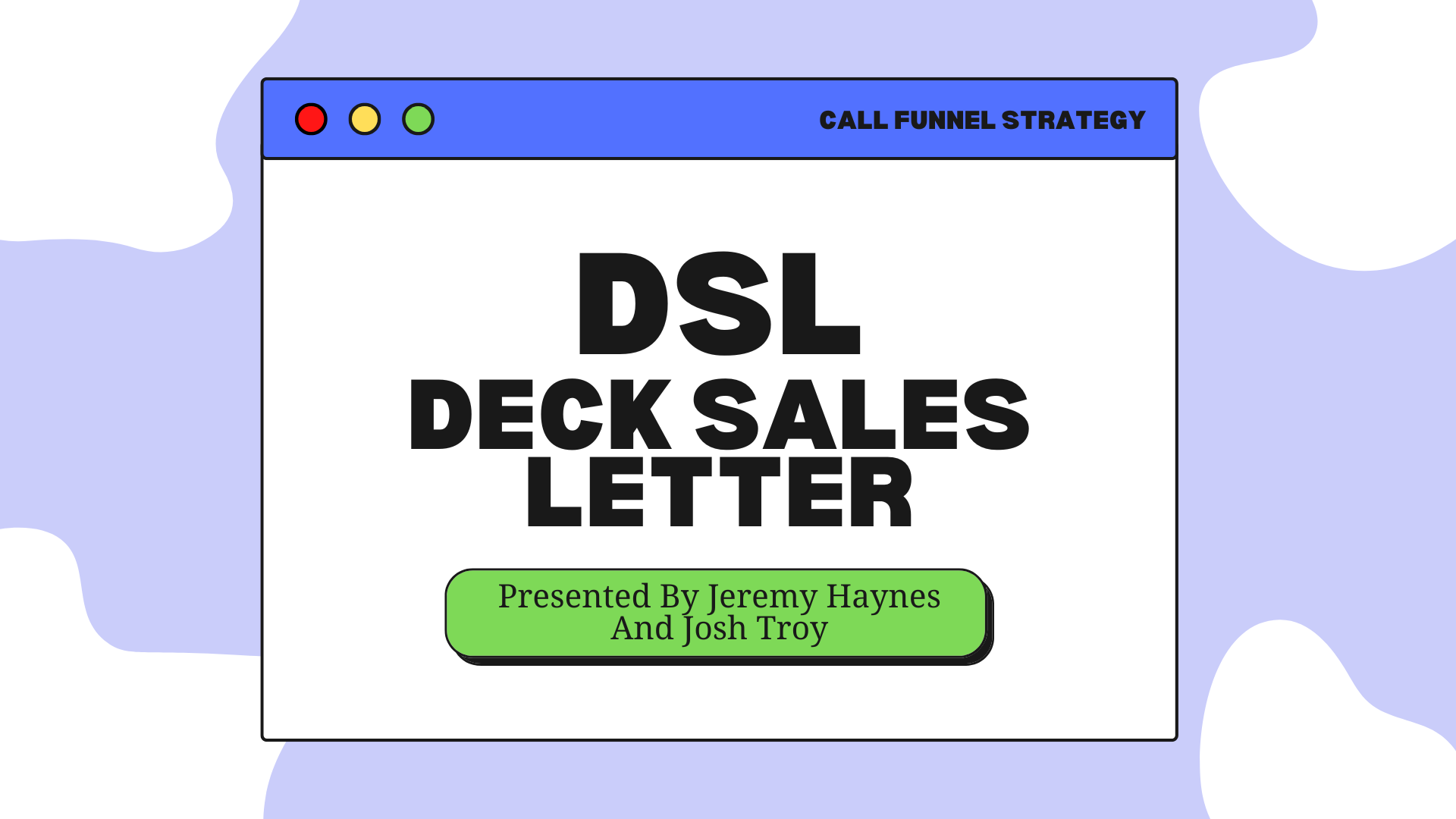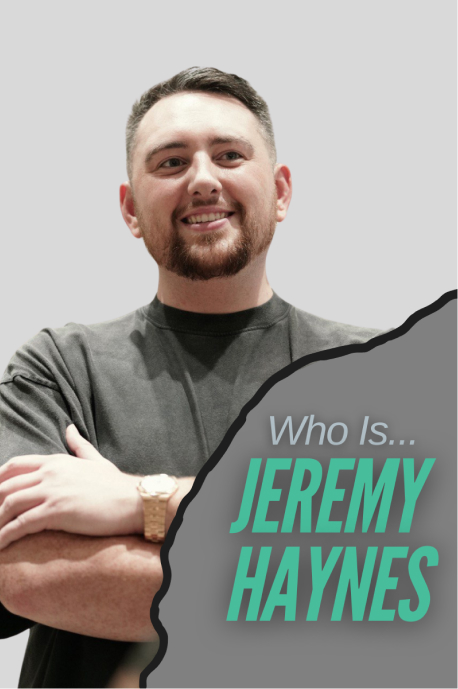I hope you enjoy reading this blog post. If you want my team to just do your marketing for you, click here.

I hope you enjoy reading this blog post. If you want my team to just do your marketing for you, click here.
Author: Jeremy Haynes | founder of Megalodon Marketing.

Earnings Disclaimer: You have a .1% probability of hitting million dollar months according to the US Bureau of Labor Statistics. As stated by law, we can not and do not make any guarantees about your own ability to get results or earn any money with our ideas, information, programs or strategies. We don’t know you and, besides, your results in life are up to you. We’re here to help by giving you our greatest strategies to move you forward, faster. However, nothing on this page or any of our websites or emails is a promise or guarantee of future earnings. Any financial numbers referenced here, or on any of our sites or emails, are simply estimates or projections or past results, and should not be considered exact, actual or as a promise of potential earnings – all numbers are illustrative only.
Every marketer striving to scale their offers—especially in high-ticket sales—has questioned why fewer prospects watch their entire video sales letters these days. For a while, standard VSL-based funnels could reliably convert at a rate high enough to generate qualified sales calls. But as consumer attention spans wavered, the raw play rate began to erode. That downward trend in play rates prompted a new approach.
This is why my co-creator, Josh Troy, and I took a strategy we’d tested in frustration—because we wanted more people to consume important information—and turned it into a full-blown DSL (Deck Sales Letter) framework.
Our original desire was simple: get people to consume the content necessary to warm them up before speaking to our sales teams. Instead of letting them skip around or bail on a VSL, we decided to condense the message into an embeddable slide deck. That shift boosted engagement almost immediately, and before we knew it, we had a consistent method to rescue the diminishing results of many standard VSL funnels.
Before we go any deeper, I want to address an important reality. My background includes working with many business owners who eventually crossed the million-dollar-a-month revenue threshold. We’ve helped 40 different businesses reach that elusive seven-figure monthly milestone over the years. However—and this is extremely important to note—the US Bureau of Labor Statistics indicates that the probability of any business surpassing $10 million per year is about 0.1%. This is a stark reminder that not everyone will hit these enormous numbers.
If you’re serious about scaling, do your own research, weigh the facts, and understand that:
Our insights are purely for informational purposes, sharing patterns and proven approaches used by those top 0.1%. It’s ultimately up to you to make it happen. The deck sales letter is one such strategy that can help, but by no means is it a magic bullet that guarantees you’ll be raking in seven figures every month.
The entire concept behind the DSL originally stemmed from the idea that standard VSL funnels suffer from a single critical bottleneck: the “play” button. We had deals—from the five-figure monthly scale up to consistent million-dollar months—whose VSL funnels started to experience:
It became harder and harder to rely on VSLs as the only way to educate prospects. Some of that may have been cyclical—marketing strategies go in and out of vogue like a “pendulum” (a concept drawn from the book Pendulum, which describes how the effectiveness of certain tactics shifts over time). Webinars had their heyday, then went cold, and are now resurging. We saw parallels with the typical 10–20-minute VSL approach.
When faced with that diminishing engagement, we asked: “How can we preserve the crucial parts of a VSL without losing a chunk of the audience right at the start?” Enter the deck approach.
In a space full of folks who copy-paste strategies, it’s important to clarify that Josh Troy and I developed the DSL method from scratch. We tested it across our clients, capturing data on page engagement, slide consumption, and final sales metrics to confirm its impact.
We coined the term “Deck Sales Letter” because it does exactly that: it replaces the video with a slide deck that effectively conveys the same info (sometimes more succinctly) while giving viewers control over how fast or slow they progress.
The idea is simple:
Here’s why it works:
Remember: Many marketing strategies revolve around how you deliver the core content. The DSL is just another method, but it’s an exceptionally useful one if you’ve found your VSL conversions or attention metrics dropping off.
Page Layout
Why Typeform + Calendly?
Responsive Slides
Highlight Navigation
It’s easy to see your funnel stats (cost per click, cost per application, show rate, etc.), but tracking how far visitors get into the deck can be slightly trickier. Nonetheless, it’s well worth it because it helps refine your deck’s content.
Remember: If you’re the business owner, you might not be the one personally implementing these solutions, but your marketing team or developers can handle it. Just ensure everyone knows the DSL is intended to be measured so you can keep optimizing.
Implementation is critical. Once you embed the DSL and direct your traffic there, you’ll see changes in:
Here’s an example scenario:
We once helped a client seeking to cut their CPA in half or, alternatively, double their ad spend to double leads. When a client says, “Which is more feasible?” I often say, “There’s no single silver bullet, but switching from a standard VSL to a DSL is a strong pivot.” Iterations of the same funnel rarely slash CPAs by 50%, but an entirely new conversion mechanism might.
Remember, the DSL can be built off more than a standard 10–20-minute VSL script. If you already use mini webinars—which are typically shorter, 5–15 minute “webinar-style” presentations—then you can embed that transcript into your deck. Some approaches we’ve tested:
Pro tip: Structure your deck’s first five slides like the “executive summary” of a whitepaper. The gist:
We’ve seen up to 70% of visitors reach slide five. This ensures that even if they stop there, they still get your most pressing points.
A big part of why the DSL works now is marketing trends come in waves—that “pendulum” effect. At one point, live webinars reigned supreme. Then folks started ignoring 2-hour events. Now, ironically, challenges and live webinars are resurging. Similarly, VSLs had a period of sky-high conversions, then hit a trough for some business verticals.
If you’re suspecting that your VSL funnel has moved into a “diminishing returns” stage, it might be the perfect time to test a DSL. In a year or two, the pendulum may swing back, and a polished VSL might outperform a deck again. Marketing success is about staying flexible—adapting when consumer attention moves from one favored format to another.
Most entrepreneurs aiming to scale eventually ask: “Should we spend more, or reduce acquisition costs and keep the budget the same?” There’s no universal right or wrong. Generally:
But halving a CPA at scale usually demands a major shift, not just headline tweaks. That’s what the DSL can provide. An entirely new consumption experience for your prospects might break your old cost benchmarks. Plus, if you add supplemental retargeting or “omnipresence” tactics like the Venus Fly Trap or Hammer Them approaches, you can reinforce your brand message and drive even more prospects back to consume the DSL.
The Deck Sales Letter is not just a novelty approach. It’s a proven alternative that many top-tier marketing agencies and entrepreneurs turn to when VSL fatigue sets in. When done correctly—with a well-formatted embedded presentation, an immediate “executive summary,” and an embedded application plus scheduler on the same page—it can drastically reshape your funnel metrics.
However, a few final reminders:
When you see unscrupulous marketers copying or plagiarizing funnel methodologies, remember: people who just copy rarely understand the finer details that drive real success. If you want to outcompete them, master these DSL fundamentals, embed them with precision, and keep iterating until your funnel is unstoppable.
You’ve just consumed an in-depth explanation of the Deck Sales Letter (DSL) strategy and how to integrate it into your funnel to drive better conversions. If you methodically implement these steps, paying attention to each detail—from disclaimers to slide embeddings to dynamic formatting—you’ll be far ahead of most who only experiment shallowly with funnel tactics.
Don’t let old, underperforming VSLs or stale webinar funnels hold you back. Adapt to the pendulum shift, embrace a deck-based approach, and watch your cost per qualified call, show rate, and overall profitability take a leap forward.
Now, it’s your turn to decide how you’ll deploy it. Will you simply paste an iframe code and hope for the best, or methodically structure your deck to highlight your best ideas in those crucial first slides? The choice is yours—but I strongly recommend the latter. Make the most of the DSL, and keep pushing until you find that sweet spot of lead quality, appointment volume, and closing ratio.
Stay persistent, remain data-driven, and keep evolving your strategies in response to market signals. If you do, you’ll stand a far better chance of being among that 0.1% who crack the code on profitable, large-scale growth—and perhaps even capturing your own million-dollar months along the journey.

Jeremy Haynes is the founder of Megalodon Marketing. He is considered one of the top digital marketers and has the results to back it up. Jeremy has consistently demonstrated his expertise whether it be through his content advertising “propaganda” strategies that are originated by him, as well as his funnel and direct response marketing strategies. He’s trusted by the biggest names in the industries his agency works in and by over 4,000+ paid students that learn how to become better digital marketers and agency owners through his education products.

Jeremy Haynes is the founder of Megalodon Marketing. He is considered one of the top digital marketers and has the results to back it up. Jeremy has consistently demonstrated his expertise whether it be through his content advertising “propaganda” strategies that are originated by him, as well as his funnel and direct response marketing strategies. He’s trusted by the biggest names in the industries his agency works in and by over 4,000+ paid students that learn how to become better digital marketers and agency owners through his education products.
This site is not a part of the Facebook website or Facebook Inc.
This site is NOT /endorsed by Facebook in any way. FACEBOOK is a trademark of FACEBOOK, Inc.
We don’t believe in get-rich-quick programs or short cuts. We believe in hard work, adding value and serving others. And that’s what our programs and information we share are designed to help you do. As stated by law, we can not and do not make any guarantees about your own ability to get results or earn any money with our ideas, information, programs or strategies. We don’t know you and, besides, your results in life are up to you. Agreed? We’re here to help by giving you our greatest strategies to move you forward, faster. However, nothing on this page or any of our websites or emails is a promise or guarantee of future earnings. Any financial numbers referenced here, or on any of our sites or emails, are simply estimates or projections or past results, and should not be considered exact, actual or as a promise of potential earnings – all numbers are illustrative only.
Results may vary and testimonials are not claimed to represent typical results. All testimonials are real. These results are meant as a showcase of what the best, most motivated and driven clients have done and should not be taken as average or typical results.
You should perform your own due diligence and use your own best judgment prior to making any investment decision pertaining to your business. By virtue of visiting this site or interacting with any portion of this site, you agree that you’re fully responsible for the investments you make and any outcomes that may result.
Do you have questions? Please email [email protected]
Call or Text (305) 704-0094